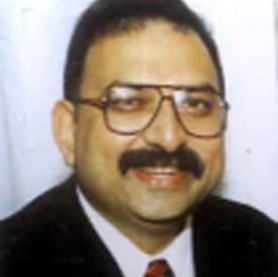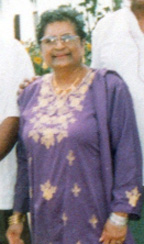Several investigation techniques that were critical to unearthing evidence in the 2006 slaying of minister Satyadeow Sawh were not followed by police, leaving behind more questions than answers, a security expert said.

There was no inquest, no Commission of Inquiry and little was done to reconstruct the attackers’ path and gather information from witnesses in the area, the expert who requested anonymity told Stabroek News recently.
Recently, Sawh’s brother-in-law, Bob Persaud said he was seeking access to convicted drug lord Roger Khan, via the Canadian government, as he believed that Khan would be able to shed light on the murders.
Despite this, Police Commis-sioner Henry Greene remains adamant that the slaying of the former agriculture minister, his siblings and security guard was the work of the `Fineman’ gang. When approached recently, Greene, after some reluctance to speak on the investigation, said he is convinced that it was this gang that carried out the attack because there was evidence to that effect. He did not divulge more information.
The security expert told this newspaper that prior to the minister’s killing the East Coast was marred by criminal violence and although Sawh lived there, nothing was done to upgrade his security.
“It is strange that there was a minister living there and yet there was no major improvement in his security. I find that odd,” he said.
Further, the security expert added that there was no Commission of Inquiry into the killing which would have ensured that as much information as possible was gathered and then put together for analysis.
He pointed that there wasn’t even an inquest which is automatic as long as people are killed under unclear circumstances. He stated that the Director of Public Prosecutions (DPP) doesn’t have to order one and the onus was on the police to make the first step in this direction.
He said too that more work could have been done to trace the attackers after the murder and someone must have seen how they came and left.
According to the security expert, “there are more questions than answers. Too much has been left to surmise and the family had a right to keep asking questions.
“Why can’t they just publish what they have about the assassination of the minister to satisfy the people and the relatives that they are working?” he questioned.

On the morning of April 22, 2006 seven masked gunmen dressed in military fatigues invaded the home of the then agriculture minister and riddled him, his two siblings, Phulmattie Persaud –Bob Persaud’s wife – and Rajpat Sawh and his guard Curtis Robertson, with bullets.
The minister’s wife, Sattie and his brother, Omprakash, were in the kitchen around 12.15 am when they saw a masked gunman. Sattie had said that she alerted the minister who was in his hammock on the veranda, but before he could have scampered to safety, he was shot. He collapsed just inside his front door. Omprakash hid his sister Phulmattie Persaud underneath a bed, but the gunmen found her and dragged her out. Omprakash had said that he begged the men for his sister’s life and gave them $23,000, a digital camera and a watch, but they still shot her in the face.
The gunmen then turned their guns on the minister again and at the same time placed Omprakash on top of Rajpat to execute them both. He said he and his brother were praying for their lives and as the gunmen left they fired shots killing Rajpat.
Police had issued several wanted bullets for persons including the late notorious prison escapee Troy Dick, Jermaine ‘Skinny’ Charles, Rondell `Fineman’ Rawlins and David Leander called `Biscuit’. Charles and Leander were charged with the murders and placed before the court. However they are both dead and the court case has since been closed. The police are still hunting for about half a dozen more men they want for questioning into the incident.
Commenting recently on statements by Sawh’s brother-in-law Bob Persaud that the government did little to investigate the incident, Home Affairs Minister Clement Rohee told this newspaper that he sympathizes with him for his loss and understands where his comments are coming from.
“So I don’t really have a quarrel with what he is saying. He is very emotional and very emotive and that is quite understandable. The fact of the matter is that the persons who were fingered in the murder have all been eliminated or had died by some way or the other,” the minister said.
Rohee said they would like to hear more from Persaud “if he has any additional information” adding that the government has been in touch with the minister’s wife, Sattie, but “we haven’t heard from her recently on such matters. So I suppose everyone in the family has a different opinion and approach on the matter.”
Persaud had last month expressed his conviction that based on what he called the government’s disinterest in getting to the truth, the murders were being covered up.
He called the government’s handling of the matter, a tragedy with all the hallmarks of a cover up. Persaud has a lawsuit pending against the Guyana government for failing to protect a minister.
Was Roger
Khan involved?
A forest concession that Khan was on the verge of acquiring in the south of the country was withdrawn while Sawh was the minister with responsibility for forestry and some observers had linked this to the slayings.
When quizzed about this, the police commissioner stressed that the withdrawal was not a motive while Rohee said that he hasn’t personally come across any evidence whatsoever to show a linkage between the two.
“There is something that people are making out that he was denied a forestry concession then took retaliatory action against the minister. I doubt that it is true because I haven’t seen any evidence to that effect,” Rohee said.
According to documentation seen by Stabroek News, on October 5, 2005 it was agreed to by a majority vote of the Guyana Forestry Commission (GFC) Board that three companies–including Aurelius Inc, which was controlled by Khan–would be awarded State Forest Exploratory Permits (SFEP). At subsequent meetings of the GFC Board, the granting of the permit to the company was discussed. However, concerns were also raised at the meetings about the inadequate due diligence done in relation to the company, in particular as to who owned the shares. It was agreed that in relation to future applications for SFEPs a more rigorous examination of the bona fides of applicants would be done.
By the next year, however, it was revealed that Cabinet had not approved the SFEP for Aurelius Inc despite the board’s all clear. The permitting process for the company was halted in the wake of the allegations contained in the US Drug Strategy Report of that year that named Khan as a known drug trafficker who had controlling interest in Aurelius Inc. The report, however, incorrectly stated that the permit was granted.
Commenting on Khan, the security expert told Stabroek News that the coincidence of his disappearance “so soon” after the minister’s killing raises questions. He opined that it is quite likely that he was in the country when the incident occurred.
“2006 was a very significant year. This is the year that Khan’s empire came apart,” he pointed out before adding that things started unravelling with the killing of talk show host Ronald Waddell; then there was the theft of the GDF weapons – which some people believed Khan had something to do with; then the joint services ‘Operation Centipede’, which targeted Khan’s properties; then the minister’s killing followed by Khan’s arrest in June.
The security expert said that from all appearances, the joint services operation caught Khan off balance. This move came shortly after the US Department of State’s International Narcotics Control Strategy Report for 2005 which was released in March 2006, named Khan as a known drug trafficker who appeared to be gaining a significant foothold in Guyana’s timber industry.
Noting Khan’s criminal background, the security expect told Stabroek News that the police could have held him when he fled here from the US, but instead he was allowed to build four housing schemes on land he should never have been given.
To what extent Khan was involved, if any, could only be known if he agrees to allow Sawh’s brother-in-law to visit him in prison, where he is serving 15 years for witness tampering, drug trafficking and gun running.
Persaud has approached the Canadian government for assistance to accessing the self-confessed drug lord.
Rohee: I’ve seen no evidence of Roger Khan link





